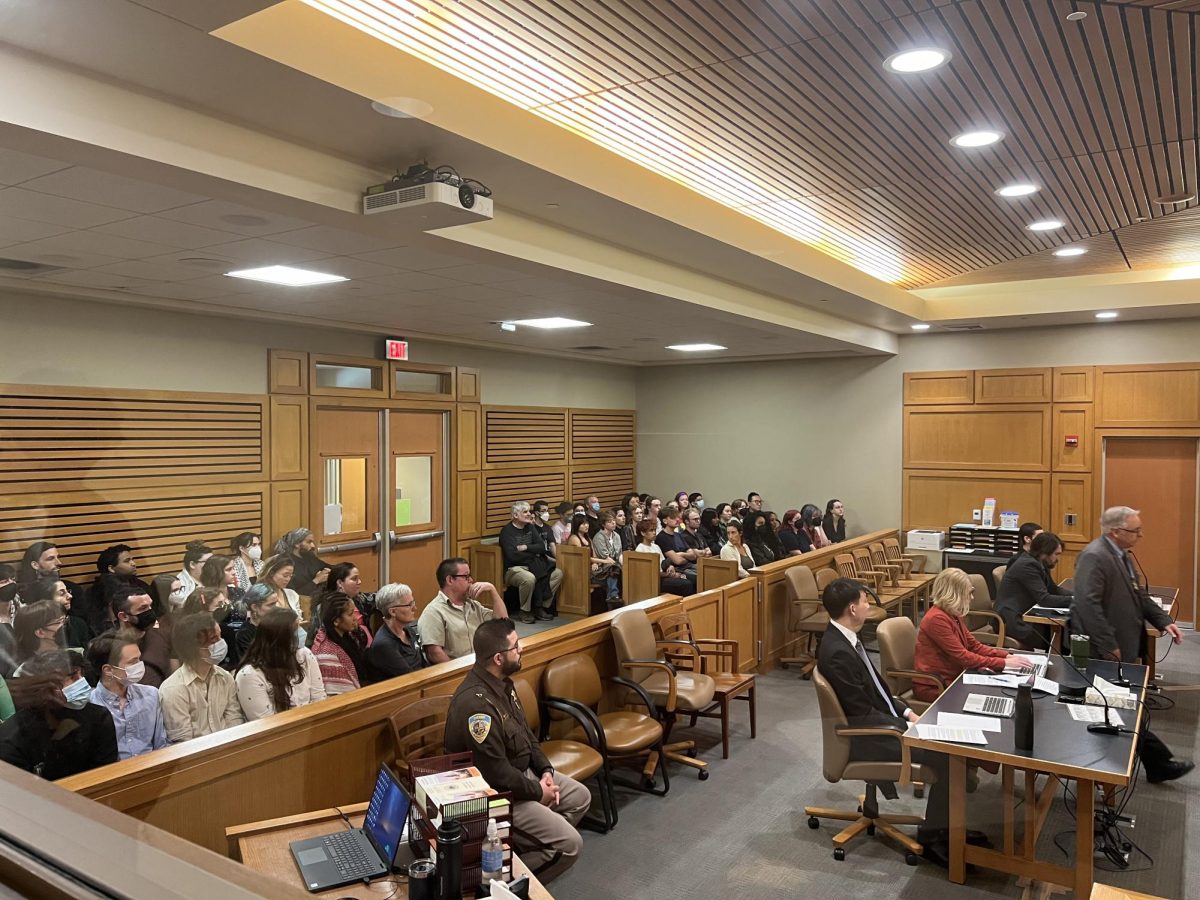As the clock ran down in the University of Wisconsin v. Ohio State University football game this past fall, UW fans immediately rushed the field to celebrate the upset in Wisconsin’s favor. Aside from UW’s memorable victory, rowdy fan behavior outside Camp Randall forced some Ohio State fans to vow to never return to Wisconsin again.
While rowdy fan behavior at UW remains under close scrutiny, other universities are also being forced to remedy the questionable behavior of their fans.
In the wake of violent Ohio State student behavior following a notorious victory over archrival Michigan in November 2002, the Task Force on Preventing Celebratory Riots was created to prevent future incidents at the university. The committee, chaired by David Andrews, dean of the College of Human Ecology at Ohio State, studied student aggression, alcohol use and adolescent risk-taking at 31 different universities nationwide. The university has experienced 12 riots over the last decade.
Cynthia Buettner, an Ohio State graduate student and research coordinator for the task force, said that since the task force’s final report, all of its suggested solutions have been implemented at OSU.
“Celebratory student disturbances are termed ‘non-issue,’ which are disturbances not about political issues, like protesting war,” Buettner said. “We find here at OSU that student disturbances aren’t necessarily connected with sporting events, and that they’re totally different in terms of ideology.”
Buettner pointed out that isolated riots at any university do not represent the entire student body.
“The biggest riot [at Ohio State] had maybe 6,000 kids at it, of which we’ve determined about half were students,” she said. “When you have 3,000 unruly students out of 50,000 students, the other 47,000 have to say [this behavior] hurts our reputation, too.”
Under direction of the city mayor and Ohio State president, campus and city police have teamed up to clean up Lane Avenue, the main street that runs through the university’s campus near the stadium. City police govern the avenue on its north side, and campus police govern it on its south side. The team strictly enforced Ohio’s open-container law on either side of Lane Avenue on game days.
“[The enforcement of the open-container law] amazingly cleaned up our campus, and I think we made a tremendous difference in campus fan behavior on game days,” Buettner said. “Before, we had everybody, including old alumni and students, carrying cases of beer down the street. Lane Avenue was full of empty beer cans.”
Buettner also said an anonymous person was hired to walk around campus and videotape on the day of the 2002 Michigan game.
“We had videotape to show urine running down stairs in parking garages after fans, not just students, were urinating in public all day long,” she said. “We had footage of drunken OSU fans kicking cars of Michigan fans as they drove off.”
Although a university must provide structure, Buettner believes fan behavior is ultimately a student issue. In order to grow a well-behaved student fan base, she feels a peer network is essential.
“Students have to say to their peers, ‘Look, guys, this isn’t fun anymore,’ and the university has to be able to support that.”
For former Big Ten referee Tom Perrault, fan behavior proves to be less threatening when contained within stadium walls with a strong police force. Besides an incident in which an empty whiskey bottle was thrown at his head at the University of Maryland, he feels all Big Ten schools have been mostly well mannered during sporting events.
In his 12 years of refereeing, Perrault said his biggest worry was leaving the stadium.
“We use the same exits as all of the fans after the game, when everybody is on the field or at the exits,” he said. “The biggest problem is at the University of Iowa, where we have to walk across the street to get to the dressing room from the field, which leaves us out mingling with the crowd after the game.”
Perrault never felt unsafe on game day, even in the presence of uncontrollable fans, pointing out that referees have security from their hotels to the dressing rooms after the games, and added, “In 12 years I have never felt threatened.”
Fans in the stands often take behavioral cues from the players themselves, Perrault noticed.
“When players are reacting by waving towels and jumping up and down, they get the crowd involved,” he said. “Fans react to the players more than the players react to the fans; they have an important say in how the fans respond.”
But sports teams do not instigate some fan behavior, and Perrault said vulgarity is the biggest problem posed for schools visiting the Big Ten, both on the field and in the stands.
“It seems that all students in the stadium are in favor of vulgarity, but that doesn’t represent the entire student body,” Perrault said. “If students police themselves, things will be much more under control.”









